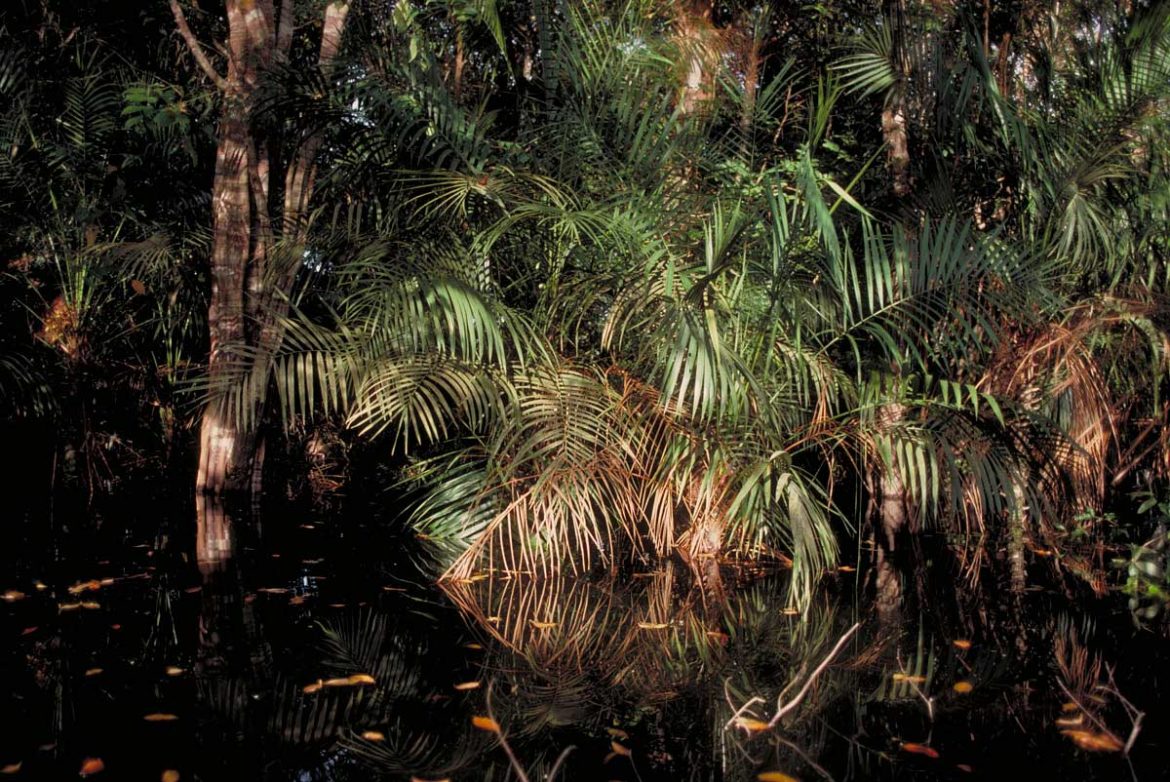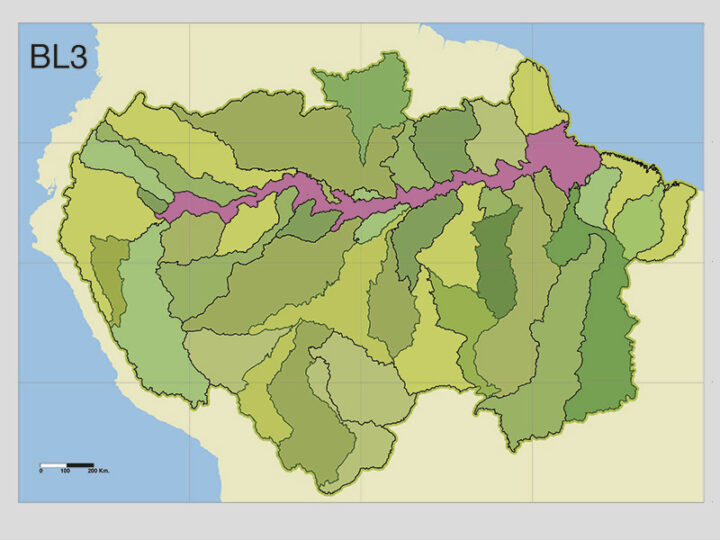
50% of Peru’s sequestered carbon is found in 3% of its forest.
Peat, or soil of at least 30% dead organic material, is most famous as the source of the smoky flavor of Irish whiskey or as the main component of the eerie flatlands of southern Patagonia. In these temperate ecosystems, peatland is valued because of its ability to hold, or sequester, large amounts of carbon, the most important greenhouse gas promoting global warming.
The Amazon is famous for its trees, which also sequester carbon, giving the region the nickname “Lungs of the Earth.” Yet, a study in the Pastaza-Marañon foreland basin in Loreto, Peru, shows that the Earth’s “lungs” should also include peatlands. Through remote sensing and work measuring carbon on the ground, the team was able to create new maps, which show the distribution of three types of peatlands, and estimate the amount of carbon held within them.
Today’s Amazonian peatlands exist at the bottom of the basin, in places that are so low in elevation that there is nowhere for water to drain to after the jungle’s annual torrential rainfall. Different vegetation can survive in peatlands, making it harder to identify using remote sensing that often relies on vegetation type. In the Draper et al. study, the combination of remote sensing and fieldwork allowed researchers to identify three types: open peatland, palm swamp, and pole forest.
Due to the proximity to large and dynamic rivers, which constantly change the landscape, and radiocarbon dating, the team proposes that open peatland is the youngest peat ecosystem in Amazonia. Open peatland has little to no vegetation and may be the first step in a sequence of steps that lead to ultimate carbon sequestration.
As the rivers either move further away or become less dynamic, the open peatland may transition into palm swamp. Palm swamp’s characteristic vegetation increases the amount of carbon sequestered because instead of just accumulating carbon in the ground, as in the open peatland, the carbon also accumulates in the trees. In this system, there is still interaction with the rivers, keeping nutrient levels high enough to support important species like the aguaje (Mauritia flexuosa).
Finally, the final step of the peatland process: the pole forest. Rivers and streams stop interacting with the peatland as they move completely away from the area, and almost all flooding comes directly from rain. The water becomes stuck, nutrient levels plummet, and pole forests are created. The pole forests identified by the Draper et al. team are located nearby the Rio Tigre and have been dated to the isolation of the Rio Tigre from the Rio Pastaza. This means that the peatland is at least 8,000 years old.
It is important to place this carbon sequestration in context. The peatlands in this basin cover about 35,600 km2 (bigger than Belgium, but only 3% of the Peruvian forest) and sequester about 3.14 petograms of carbon (about 50% of that estimated for the Peruvian Amazon). That means if we were to destroy the Amazonian peatlands, we would be emitting half the annual global carbon emissions from fossil fuels. While the Amazon is the “lungs of the Earth” and deserves a thoughtful mix of protection, management, and development for all land types, these wetlands’ carbon power renders them a natural conservation priority.
Research like this allows policy and management decisions to be made in intelligent ways that promote nature conservation and sustainable human development. Dr. Tim Baker (University of Leeds) presented this particular research at the Wildlife Conservation Society’s launch of the Amazon Waters Initiative, an initiative centered on wetlands conservation, peatlands included. The initiative seeks to highlight the importance of wetlands in connecting forests and biodiversity, and facilitating ecosystem services, such as carbon sequestration, in Amazonia. The launch included the participation of several institutions, including an introduction by the then- Minister of Environment, Manuel Pulgar-Vidal, and presentations by other scientists. For more information on the initiative, visit the website, and stay tuned for more news.
References
Draper, F.C., K.H. Rocoux, I.T. Lawson, E.T.A. Mitchard, E.N.H. Coronado, O. Lähteenoja, L. Torres Montenegro, E. Valderrama Sandoval, R. Zaráte, and T. R. Baker. 2014. “The distribution and amount of carbon in the largest peatland complex in Amazonia.” Environmental Research Letters 9: 124017. doi: 10.1088/1748-9326/12/124017
International Peatland Society. 2016. “What is peat?” URL: http://www.peatsociety.org/peatlands-and-peat/what-peat
McKinley, Galen A. 2016. “Fossil Fuels.” URL: http://carboncycle.aos.wisc.edu/fossil-fuels/ University of Wisconsin – Madison.
Amazon Waters Initiative. 2016. “The Initiative.” URL: http://amazonwaters.org/ Wildlife Conservation Society.
Written by Natalia Piland.


